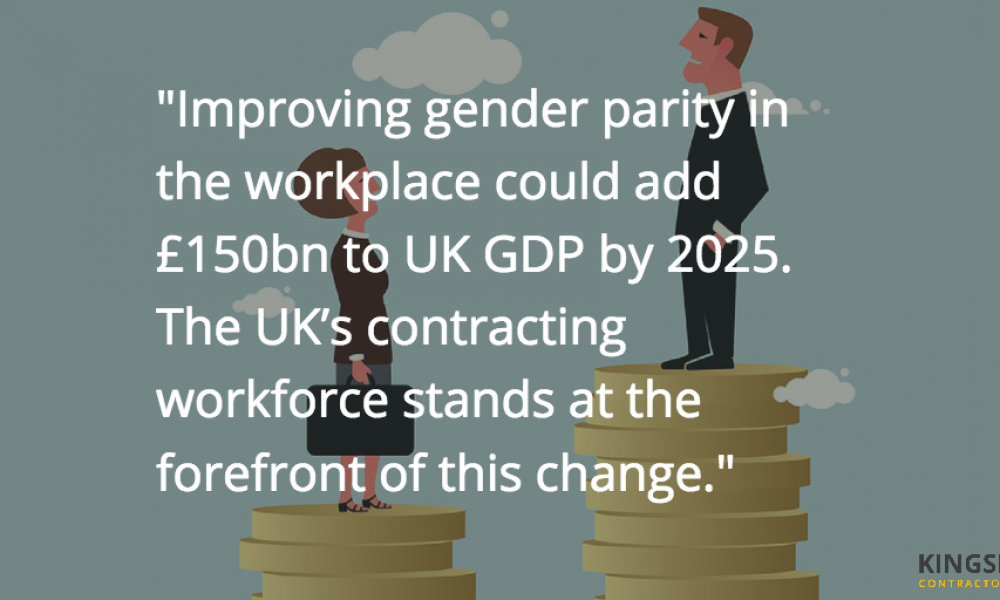10 things you might not know about self-assessment
It’s that time of year again! As every contractor and freelancer knows, January is the time to get those accounts…
While improving, the extent of the UK gender pay gap ? the difference in average earnings between men and women…

While improving, the extent of the UK gender pay gap ? the difference in average earnings between men and women – remains significant. An analysis by the BBC in April 2018 of the pay data submitted by 10,000 large firms revealed that nearly 80% of companies paid men more than women. Further the BBC showed that men make up the majority of the higher-paid jobs and are paid bigger bonuses – in some industries up to 35% more.
A lot of the focus of the gender pay gap debate is on full time permanent staff, as they are who companies employing more than 250 people are required to report on by law. But that does not include freelance and contractor workers, an increasingly important part of today’s labour force, growing by 25% since 2009 and contributing an estimated £109bn a year to the UK economy, according to contractor trade body IPSE.
The question is whether the contracting and freelancing industries suffer a similar pay gap, particularly when you consider that the Pensions Policy Institute found women made up 97% of the net increase in self-employed workers last year?
At first glance, the answer is yes. For a start there remain more men than women contractors according to IPSE’s Gender Split Report, 59% of PSCs are male and 41% female.
In some sectors the weighting is far more marked an analysis by Contractor UK of its database revealed that within the top three contracting sectors of Automobile, Construction and Engineering, men made up 81%, 94% and 79% of contractors respectively (although it should be acknowledged that these are all historically male-dominated sectors and, as such, will likely take more time to reach a balanced number.)
Further there is evidence, according to research by jobs platform Yuno Juno, that in the creative industries, for example, men command an average day rate that is £15 (5%) more than women. That difference can be up to £50 higher in disciplines such as creative, design, UX and film although women can take higher rates across strategy and client service roles.
But that doesn’t tell the whole story. According to data collected by online services platform Bidvine, the average freelancer and contractor gender pay gap has shrunk to an average of 1.9% in key UK industries, compared to the 9.8% reported by larger employers.
In sectors like photography and language and music teaching for example, women competing for freelance and self-employed opportunities earned more than men and won more jobs. And further analysis by Contractor UK of its own database provided an unexpected discovery: the average daily rate of a male contractor was £404, versus £408 for women.
Problem solved then? Not at all. The gender pay gap remains a feature of the UK economy that the government has pledged to eradicate within a generation.
Large numbers of self-employed women are in sectors which are traditionally lower paid. For example, zero hours contracts, which are often a feature of low paying female dominated industries such as health, social work, hospitality and retail, are a particular concern for female freelancers, with the Office of National Statistics estimating that women make up 58% of zero hour contract employees.
But what the above does perhaps illustrate is that contracting at least provides an opportunity for women to escape the imbalance that exists within larger companies. And while the extent of the gender pay gap varies significantly between sectors and much work remains to be done to close it, the contracting industry would at least appear to be heading in the right direction.
Everyone stands to gain from this shift. In fact, the McKinsey Global Institute has estimated that improving gender parity in the workplace could add £150bn to UK GDP by 2025. The UK’s contracting workforce stands at the forefront of this change. And Kingsbridge Contractor Insurance is committed to accompanying them on this journey.